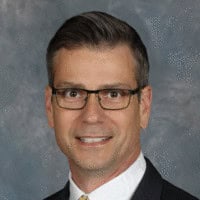A New Blueprint
In the ordinary course of life and human interactions, an apology is expected when something happens that leaves one or the other party insulted, offended, hurt, or defamed in some way. This kind of damage may be emotional and perhaps psychological in nature. The same is true for physical hurt and damage.
One thing that makes apologies tricky and often disempowering is that what people are apologizing for to each other, more often than not, never happened. Here’s what I mean by that: What people say happened is usually their interpretation generated through their perception of what happened.
So often people are apologizing because:
- You interpret what happened one way,
- The other party or parties have a different interpretation, and
- The difference in interpretation leads to disagreement based on conflicting interpretations, disappointment based on unstated and unmet expectations, and dysfunction based on mutual incapacity or unwillingness to communicate openly because one or the other fears judgment, exclusion, or ostracization.
In the ordinary course of life, people apologize for various reasons. The most common include:
- I admit guilt for not having the same point of view as you and not interpreting what happened in the same way you do, but I want to get back in your good graces.
- My actions made you ashamed and embarrassed; I want to make amends.
Most apologies often come as two very sincerely uttered words: I apologize.
Most apologies are ineffective even against the basic definition of an apology found in the dictionary. Case.org publishes what they call the 3A’s of apologies.
- “Acknowledgement. Acknowledge the situation and say you are sorry for what happened.
- Acceptance. Hold yourself accountable and work to rectify the situation. Good apologies refrain from finger-pointing and excuses.
- Amends. Talk about what you will do and start working on corrective measures”.
It’s almost as if the two words “I apologize” have come to mean all that, a form of shorthand that accommodates my laziness. The burden is on the person who’s hurt or damaged to assume all of that because the perpetrator is saying I apologize in a sincere tone.
I am not against uttering the two patterned words. It is at least a beginning.
What warrants an apology:
What warrants an apology in the context I am creating for authentic leadership is the following:
- What I did or did not do, or what I said or did not say the doing or not doing or the saying or not saying of which I know would offend, damage, embarrass, or injure either physically or emotionally, and I did it.
- What I did or did not do, or what I said or did not say the doing or not doing or the saying or not saying of which offended, damaged, embarrassed, or injured another or others either physically or emotionally even if I did not deliberately intend that.
Why Apologize:
The ultimate purpose of an apology is to begin to undo the emotional or physical damage caused by my actions, that is, what I did or did not do, what I said or did not say that left someone else injured, damaged, and offended. Apologies set me free and set others free; they restore trust and rebuild relationships. Moreover, an apology is for me; it is my way of restoring honor to myself.
The anatomy of apologies that heal and transform all involved:
Apologies that go beyond sincerity have the power to heal and transform. The following thirteen steps give us a peek into the anatomy of the kinds of apologies that cause transformation for both the perpetrators and the victims. The realm of possibility, which I call the world of apologies, creates the space for authentic leaders to practice transforming themselves, those around them, and the institutions they serve.
Step-by-Step:
- Say what you did or did not do, say or did not say in plain words. What I mean by plain words is that the following are not required: explanations, validations, justifications, stories, admissions of guild, demonstrations of shame, nothing more, nothing less than what happened unvarnished, bare for all to hear and feel, devoid of the interpretations of others as well as mine.
- Inquire about the impact on the people involved. Though history or my culture may inform me about the effects, I will know once I ask the person or groups involved. Really getting the impact of what I said or did is essential to the apology I offer being authentic.
- Listen and probe to get the impact. There is a listening that leaves people heard, known, and honored. The listening that in and of itself fulfills the intention of the apology. Here are some suggestions on how to listen that way:
- Listen to repeat word for word everything the person who’s speaking is saying. When the person pauses, take the time to repeat what they just said and ask for confirmation that you heard correctly.
- Continue to listen. This time, listen to the impact of what you said or did not say or did not do on the person. When they pause, take the time to talk to them while paraphrasing and adding what you heard as the impact. Be precise about the effects. Please include in your statements how you impacted their time, finances, relationships and reputation, and emotional well-being were impacted. Again, ask for confirmation that you heard and felt accurately. Repeat the step until you and the person you’re speaking to are satisfied that you got it.
- Continue to listen. This time around, listen to the commitment in the background that the person you are listening to has. That is the very commitment that would have them upset in the first place. When the person pauses, take the time to say to them while paraphrasing and adding what you heard and the impact. This time around, add what you heard about their commitment. Their commitment is in the background, which they did not even say. Again, ask for confirmation that you heard, felt, and acknowledged their responsibility in a way that left them moved and inspired. Please repeat this step until you and the person you’re speaking to are satisfied that you got it.
- Now, and only now, after you have listened in a way that transformed you, them, the circumstances, and the relationship itself, you can say: I apologize for the damage I have caused. Do you accept my apology? Say nothing else until you hear them say: I accept your apology. If they cannot authentically say I accept your apology, it’s time to return to Step 3.
- Inquire about how to repair the damage you caused. You may ask: “What does it look like for you when I have repaired the damage I have caused? Is there anything I need to do or say? Be prepared to accept the consequences, whatever they may be.
- Repeat what they have said and ask for confirmation that you understand and are clear about the actions they’re requesting you take to repair the damage. Only move forward once you are clear that they are clear on the agreement you’re making.
- Make promises to take the actions they ask you to take to repair the damage caused. Tell them when you will fulfill those promises and keep them as if your life depended on them. It does. Regardless of what they say, in this step, you are to make explicit promises about what you will do and say to restore yourself. The apology you are offering is also for you, and the process is incomplete until you can say you are whole again.
- Say something to create and establish the relationship you want with that person and that group beyond this apology.
- Ask if there is anything else you want to say. If the answer is yes, go back to Step 3.
- Ask: Is there anything else you want to hear from me? If the answer is yes, go back to the appropriate step and move forward until you reach this step. If the answer is no, your apology is complete.
This step-by-step approach is what authentic leaders practice throughout the authentic leadership journey.







